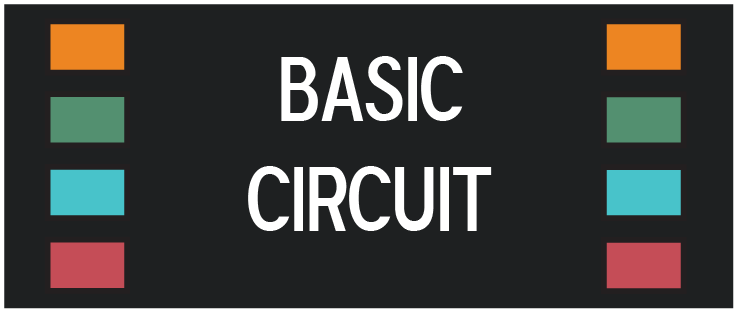Difference between revisions of "Team:UCSF/Description"
| Line 45: | Line 45: | ||
$('.part2').click(function () { | $('.part2').click(function () { | ||
$('#contentProject').html( | $('#contentProject').html( | ||
| − | "<p class='headerProjectSub'>BASIC CIRCUIT</p><div class='headerBreakSub' style='width:100%'></div></br><p class='content1'><b style='color:#368E8C;font-size:1.5em'>Individual Response: GFP</b></br></br><img style='float:right;margin-right:0px;margin-top:-80px' src='https://static.igem.org/mediawiki/2015/2/27/UCSF_Basic_Circuit_Diagram_Part_2-01.png' alt='Circuit Part 2' height='210' width='350'><b>Cells produce GFP in response to doxcycline.</b></br></br><b style='color:#368E8C'>Design:</b> pTET inducible promoter drives production of GFP | + | "<p class='headerProjectSub'>BASIC CIRCUIT</p><div class='headerBreakSub' style='width:100%'></div></br><p class='content1'><b style='color:#368E8C;font-size:1.5em'>Individual Response: GFP</b></br></br><img style='float:right;margin-right:0px;margin-top:-80px' src='https://static.igem.org/mediawiki/2015/2/27/UCSF_Basic_Circuit_Diagram_Part_2-01.png' alt='Circuit Part 2' height='210' width='350'><b>Cells produce GFP in response to doxcycline.</b></br></br><b style='color:#368E8C'>Design:</b> pTET inducible promoter (induced by Doxycycline + rtTA) drives production of GFP</br><b style='color:#368E8C'>Purpose:</b> This is our individual response. The GFP output is directly correlated with the concentration of doxycycline used to induce the cells (see data), allowing us to see how each cell in the population is responding to the stimulus.</br></p></br><div class='seeData'><a href='https://2015.igem.org/Team:UCSF'>See Our Data <img class='readMoreArrow' src='https://static.igem.org/mediawiki/2015/6/68/UCSF_Read_More_Arrow.png' alt='Next Arrow' height='35' width='35'></a></div></br>"); |
$('#set1').css('display','none'); | $('#set1').css('display','none'); | ||
$('#set2').css('display','block'); | $('#set2').css('display','block'); | ||
| Line 53: | Line 53: | ||
$('.part3').click(function () { | $('.part3').click(function () { | ||
$('#contentProject').html( | $('#contentProject').html( | ||
| − | "<p class='headerProjectSub'>BASIC CIRCUIT</p><div class='headerBreakSub' style='width:100%'></div></br><p class='content1'><b style='color:#368E8C;font-size:1.5em'>Communication Signal: mFα</b></br></br><img style='float:right;margin-right:0px;margin-top:-80px' src='https://static.igem.org/mediawiki/2015/a/aa/UCSF_Basic_Circuit_Diagram_Part_3-01.png' alt='Circuit Part 3' height='210' width='350'><b>Cells produce mFα in response to doxcycline.</b></br></br><b style='color:#368E8C'>Design:</b> pTET inducible promoter drives production of mFα.</br><b style='color:#368E8C'>Purpose:</b> | + | "<p class='headerProjectSub'>BASIC CIRCUIT</p><div class='headerBreakSub' style='width:100%'></div></br><p class='content1'><b style='color:#368E8C;font-size:1.5em'>Communication Signal: mating factor α (mFα)</b></br></br><img style='float:right;margin-right:0px;margin-top:-80px' src='https://static.igem.org/mediawiki/2015/a/aa/UCSF_Basic_Circuit_Diagram_Part_3-01.png' alt='Circuit Part 3' height='210' width='350'><b>Cells produce mFα in response to doxcycline.</b></br></br><b style='color:#368E8C'>Design:</b> pTET inducible promoter (induced by Doxycycline+rtTA) drives production of mFα.</br><b style='color:#368E8C'>Purpose:</b> mFα is our communication signal. All cells in the population will be able to both sense and secrete this small peptide. This allows them to process their original, and individual, responses to the stimulus through communication and community coordination.</br></p></br>"); |
$('#set2').css('display','none'); | $('#set2').css('display','none'); | ||
$('#set3').css('display','block'); | $('#set3').css('display','block'); | ||
Revision as of 23:31, 18 September 2015
BACKGROUND
Cells in a population can have varied responses to a stimulus, but are able to coordinate their responses through communication motifs. Chemical signaling to neighbors in a community can allow populations to make more robust and effective decisions as a collective whole.T Cells, for instance, need to know whether or not to proliferate to attack a given antigen. If too many proliferate, an autoimmune disorder is generated. If too little proliferate, the antigen continues to attack the body. By sensing the antigen at varying levels and communicating with the population, each T Cell knows whether or not it should activate and what level to activate at, in order to carry on their function properly. But, how do these cells communicate and how do they understand their role as part of the collective? How do these genetically identical cells in the same population differentiate themselves from others? What motifs are necessary to elicit a bimodal response, in which high activating cells stay ON and low activating cells stay OFF? Our goal this year is to understand these questions and to take advantage of the natural variation found within cells of the same population in order to amplify that difference and create two divergent responses. Our genetic circuit will utilize a stimulus that activates a fluorescent readout for individual response (GFP) and the secretion of a communication signal that is sensed and secreted by all members of the community. This community signal will in turn activate a fluorescent readout for community response (RFP).

SYNTHETIC COMMUNITY






Click on the part of our circuit you are interested in learning about in the image above.
REFERENCES
- Balázsi, Gábor, Alexander Van Oudenaarden, and James J. Collins. "Cellular Decision Making and Biological Noise: From Microbes to Mammals." Cell 144.6 (2011): 910-25.
- Cotari, Jesse W., Guillaume Voisinne, and Grégoire Altan-Bonnet. "Diversity Training for Signal Transduction: Leveraging Cell-to-cell Variability to Dissect Cellular Signaling, Differentiation and Death." Current Opinion in Biotechnology 24.4 (2013): 760-66.
- Diener, Christian, Gabriele Schreiber, Wolfgang Giese, Gabriel Del Rio, Andreas Schröder, and Edda Klipp. "Yeast Mating and Image-Based Quantification of Spatial Pattern Formation." PLoS Comput Biol PLoS Computational Biology 10.6 (2014).
- Feinerman, O., J. Veiga, J. R. Dorfman, R. N. Germain, and G. Altan-Bonnet. "Variability and Robustness in T Cell Activation from Regulated Heterogeneity in Protein Levels." Science 321.5892 (2008): 1081-084.
- Höfer, Thomas, Oleg Krichevsky, and Grégoire Altan-Bonnet. "Competition for IL-2 between Regulatory and Effector T Cells to Chisel Immune Responses." Front. Immun. Frontiers in Immunology 3 (2012).
- Huberman, L. B., and A. W. Murray. "Genetically Engineered Transvestites Reveal Novel Mating Genes in Budding Yeast." Genetics 195.4 (2013): 1277-290.
- Jahn, Michael, Annett Mölle, Gerhard Rödel, and Kai Ostermann. "Temporal and Spatial Properties of a Yeast Multi-Cellular Amplification System Based on Signal Molecule Diffusion." Sensors 13.11 (2013): 14511-4522.
- López, Daniel, and Roberto Kolter. "Extracellular Signals That Define Distinct and Coexisting Cell Fates in Bacillus Subtilis." FEMS Microbiology Reviews FEMS Microbiol Rev 34.2 (2010): 134-49.
- Shiow, Lawrence R., David B. Rosen, Naděžda Brdičková, Ying Xu, Jinping An, Lewis L. Lanier, Jason G. Cyster, and Mehrdad Matloubian. "CD69 Acts Downstream of Interferon-α/β to Inhibit S1P1 and Lymphocyte Egress from Lymphoid Organs." Nature 440.7083 (2006): 540-44.
- Tkach, Karen, and Grégoire Altan-Bonnet. "T Cell Responses to Antigen: Hasty Proposals Resolved through Long Engagements." Current Opinion in Immunology 25.1 (2013): 120-25.
- Tkach, Karen E., Debashis Barik, Guillaume Voisinne, Nicole Malandro, Matthew M. Hathorn, Jesse W. Cotari, Robert Vogel, Taha Merghoub, Jedd Wolchok, Oleg Krichevsky, and Grégoire Altan-Bonnet. "T Cells Translate Individual, Quantal Activation into Collective, Analog Cytokine Responses via Time-integrated Feedbacks." ELife 3 (2014).
- Waters, Christopher M., and Bonnie L. Bassler. "QUORUM SENSING: Cell-to-Cell Communication in Bacteria." Annual Review of Cell and Developmental Biology Annu. Rev. Cell Dev. Biol. 21.1 (2005): 319-46.
- Youk, H., and W. A. Lim. "Secreting and Sensing the Same Molecule Allows Cells to Achieve Versatile Social Behaviors." Science 343.6171 (2014): 1242782.
